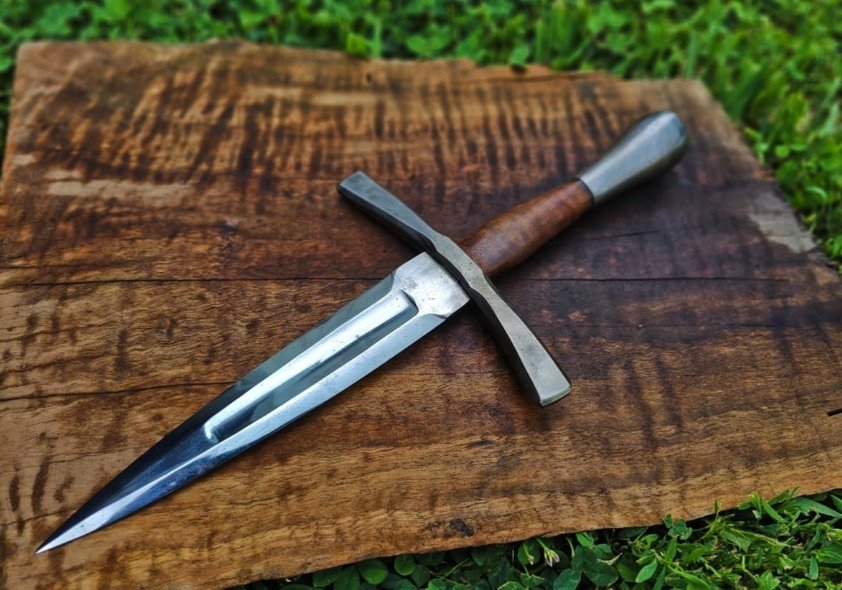since this is an online course, you will
need a few tools to get started.
-
Propane or natural gas is best, but coal or wood will work too.
-
It can be a traditional anvil shape, or something like a railroad track anvil, or a square sow block with no horn or hardy hole.
-
This can be any size of stationary or tabletop belt sander. it just needs to have a plate behind the belt, and a contact wheel.
-
This can be any size.
-
This can be any size
-
This can be either one, and you can use any model or size.
In this course the goal is to have the skills necessary to make professional quality knives, and have enough knowledge and experience to take on commission orders from customers, and create and scale your small business as a knife maker.
the course content includes
FORGING
I go over the forging techniques required for making knives including
Drawing out length
Drawing out width
Thinning down thickness
How to forge a point without folds or fish mouthing
How to forge a handle
how to forge a hidden tang
How to forge clean and even bevels
How to straighten your work piece
GRINDING
A very comprehensive grinding section that simplifies the process of profile grinding and teaches bevel grinding in a way to make it easier for beginners to fast track, and master without the trial and error, or messing up as many knives in the process.
I cover 7 different blade types so that no matter what you want to make, or what your customer orders from you, you will have the experience, knowledge, and confidence to take it on.
FITTING GUARDS
How to get perfect fit up on 4 different guard variations
full tang bolster guard
hidden tang bolster guard
hidden tang guard
full tang guard
and how to make
an S guard
a D guard
a flat guard
and a bolster guard
and how to get perfect seamless fit up on all of them as a beginner with minimal experience.
HEAT TREATMENT
in this course there is heat treatment information on 19 different steel types, and a guide to help you choose the right one, as well as tempering information on different temperatures and differential tempering, and tempering knife blades in different ways to make them perform differently depending on what the intended use is.
POLISHING AND FINISHING
in the polishing and finishing section i go over
the most efficient way to hand sand
the correct way to hand sand to get a mirror finish
how different finishes perform differently and when to use them
how to force a patina on your knives
HANDLES
In this portion of the course I cover 7 different handle types including
full tang
full tang knife with a guard
hidden tang
half tang
how to fit up handles to guards
how to fit up multiple piece handles
how to fit up pommels
SHARPENING
in this portion of the course i go over
how to sharpen a knife with stones
how to sharpen a knife on a belt sander
5 different edge types
what angle to sharpen your edge at depending on the intended purpose
SHEATHS
in this portion of the course I go over how to make 3 types of sheaths.
SALES AND BUSINESS
In the sales portion I go over how to get your first sales as a knife maker.
And how to scale up your sales and make it easier over time.
As well as how to build a reputation that will allow you to take on commission work, and get custom orders.
This online course has everything you need to go from a beginner knife maker, to a professional level blade smith with the skills you need to take on commission work, and sell your knives and scale up your small business!
